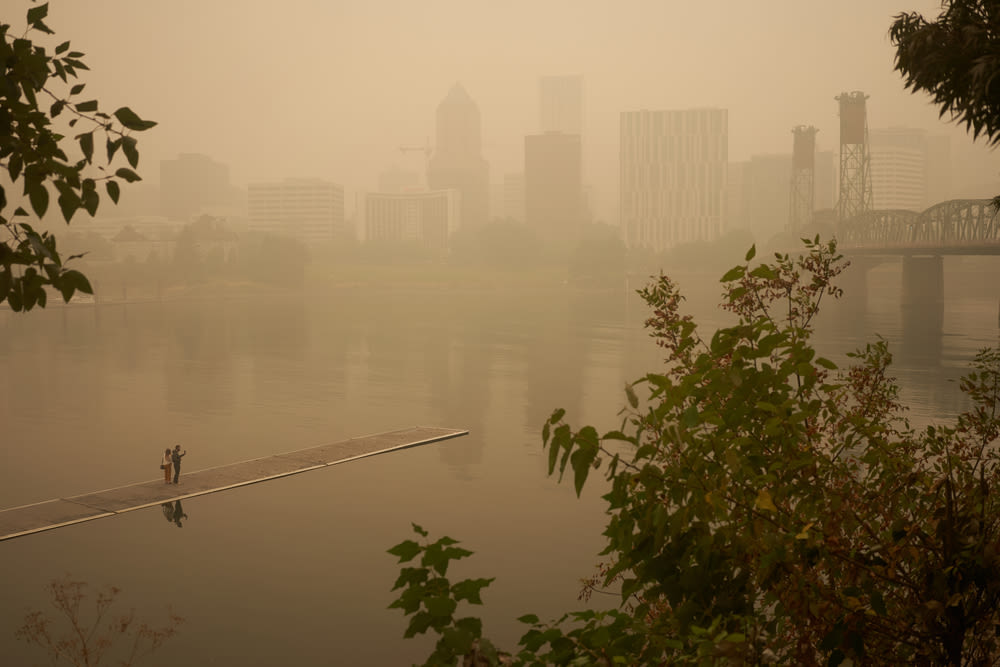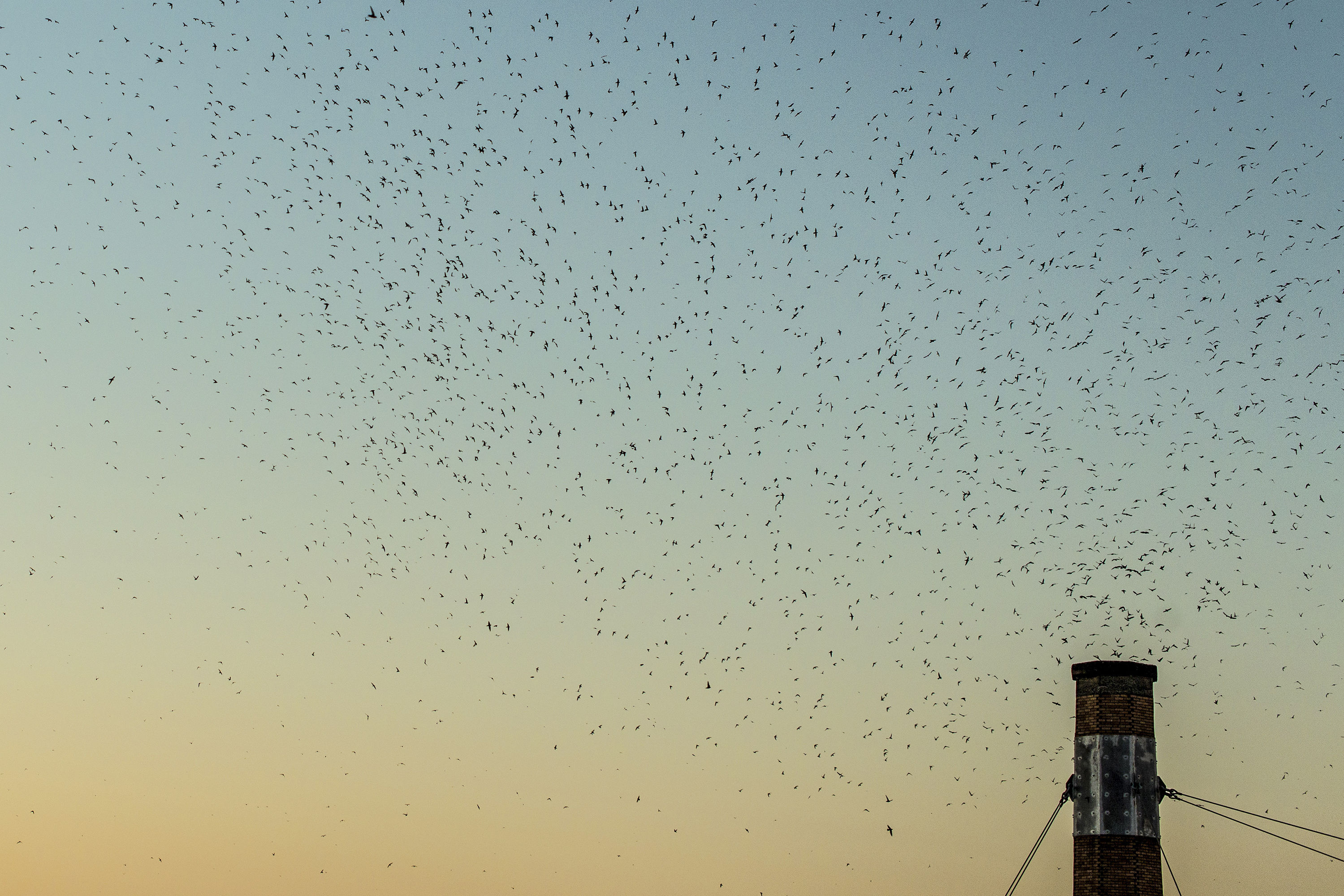It's Wildfire Season in the Pacific Northwest. In April.

Remember last summer's smoky air in downtown Portland?
Image: Tada Images/Shutterstock
Okay, so all those jokes and memes about Oregon weather—the people who bust out the tank-tops and flip-flops the second it hits 57 degrees on that freakish day in January, the collective eye-rolling about grey June-uaries and the old saw about how summer doesn’t start until July 4, ho-ho-ho, bet you’ve never heard that one before—they’re done.
Instead, we now live in the world of pre-fire season and fire season.
Fun, right?
And while you all are basking in the glory of this weekend’s predicted 80-degree temperatures (now it’s okay to break out the tank tops), the folks who work for various wildfire-watching agencies would like you to know that wildfire season has officially begun.
Due to ongoing dry conditions and warming weather, the Multnomah Fire Defense Board has issued a BURN BAN for all of Multnomah County effective TODAY, April 14th, 2021. This includes campfires, yard debris, and fire pits. BBQing is allowed, but please exercise EXTREME caution. pic.twitter.com/GXdGK3TkwI
— Portland Fire&Rescue (@PDXFire) April 14, 2021
In April.
"We learned the hard way last year just how quickly things can spread," Governor Kate Brown said at a Friday press conference, during which she warned about unseasonably warm weather and high East winds.
Weirder still, our dry, sunny conditions are expected to prevail for at least the next nine days, and with each passing day, the chances of building up our snowpack as a bulwark against the coming summer get slimmer.
The National Weather Service is mincing no words: Given warm, breezy conditions expected through the region Friday and Saturday, do not do any outdoor burning, particularly not if you live near dry, brushy areas.
The Northwest Interagency Coordination Center, meanwhile, has some pretty depressing maps up forecasting the summer ahead, particularly for those of us for whom the 10 days of smoke-bleached sky in September 2020 was an especial low in a year filled with them.
According to their projections, by June the entire Cascade Range in Oregon has an above-normal chance for “significant fire potential,” a situation that continues unchecked into July.
Already, Gov. Kate Brown has declared a drought emergency for Klamath County in the southern part of the state, a potential warning sign.
Against that backdrop, the state has already begun some wildfire mitigation efforts, spending $5 million on 19 projects across the state, including some 7,000 particularly susceptible acres being cleared of fuel that can easily spark larger blazes.
None of this used to be normal, says Jim Gersbach, a public affairs specialist with the state Forestry Department. Looking decade by decade in Oregon, there’s a clear pattern of larger fires occurring with more regularity, due at least in large part to our ever-warming climate. So while we may be lulled into false senses of security by relatively low-fire off years like 2016 or 2019, so-called mega fires are increasingly to be expected.
“We are getting double in a decade what we used to get in a century,” Gersbach says. “That’s a lot of land that has been altered for the rest of your life.”




